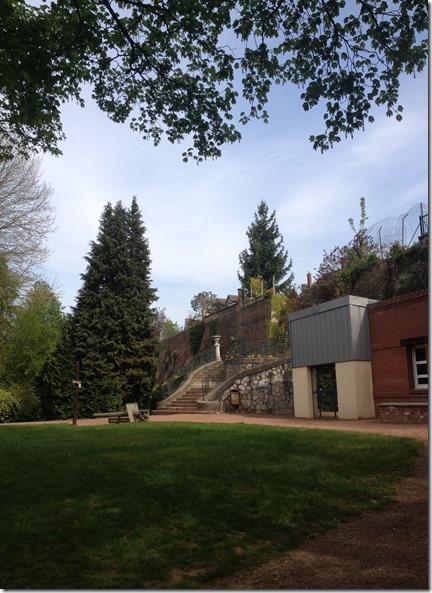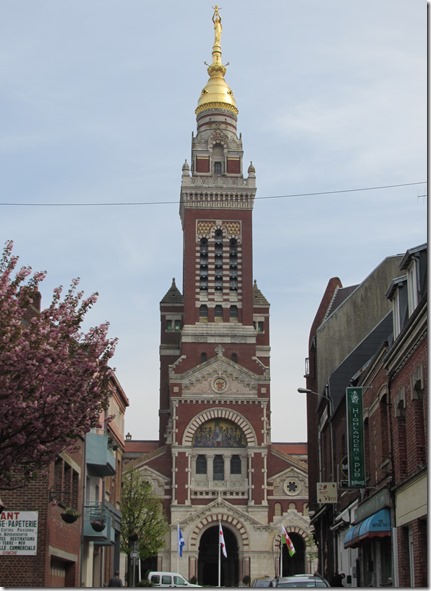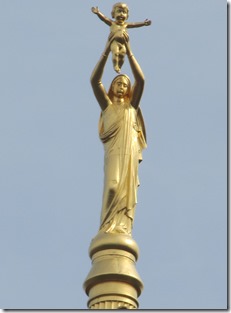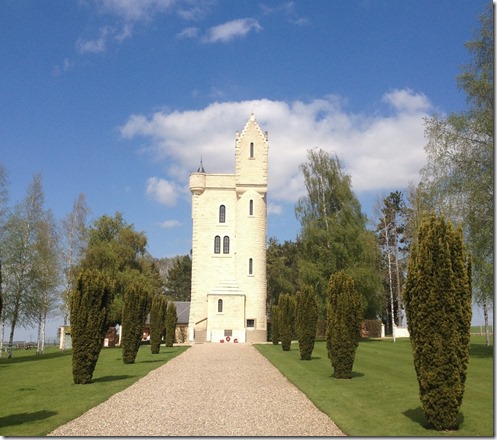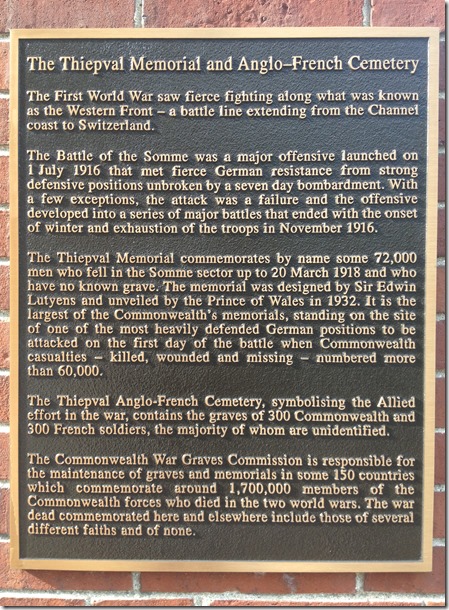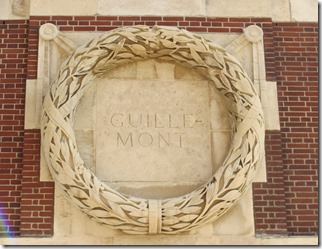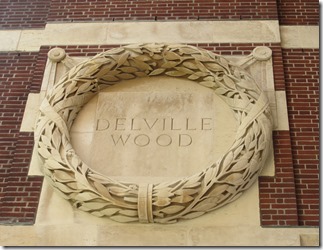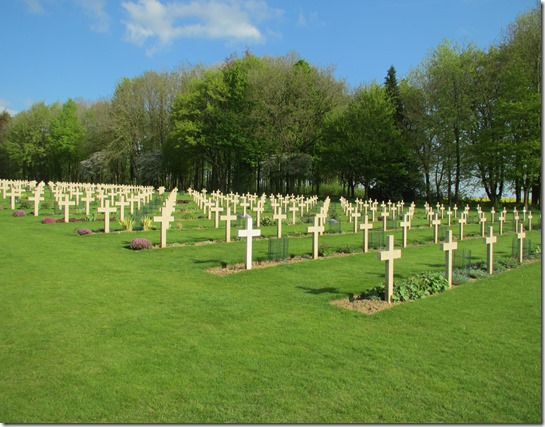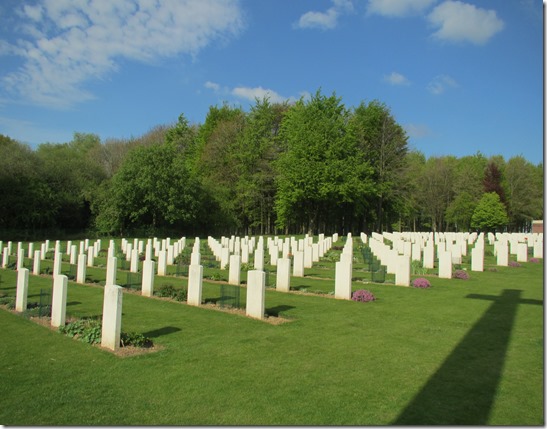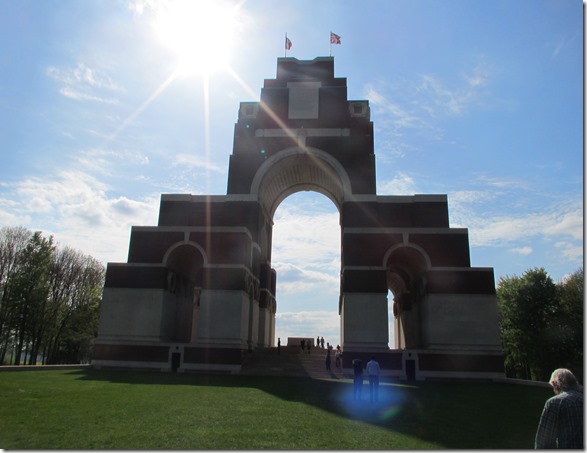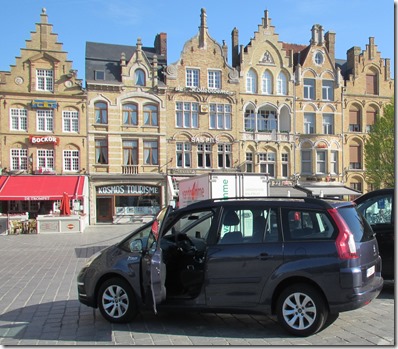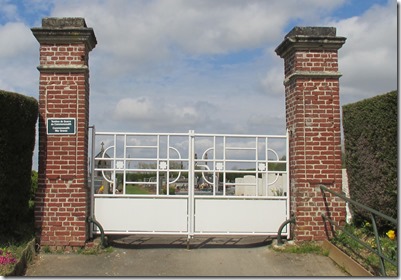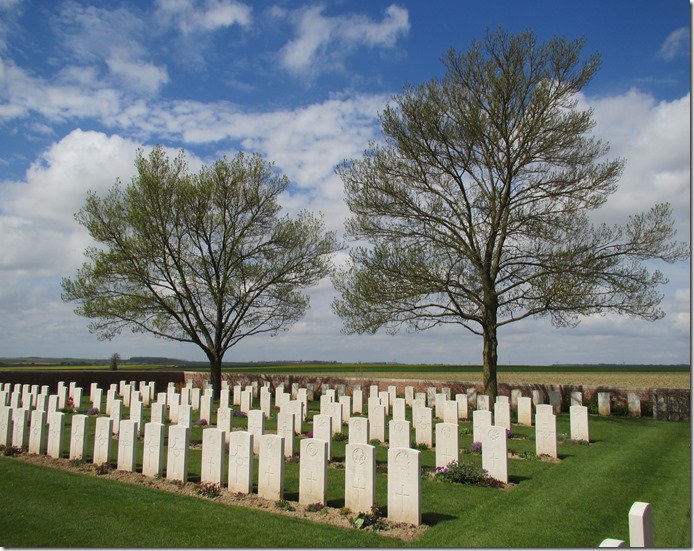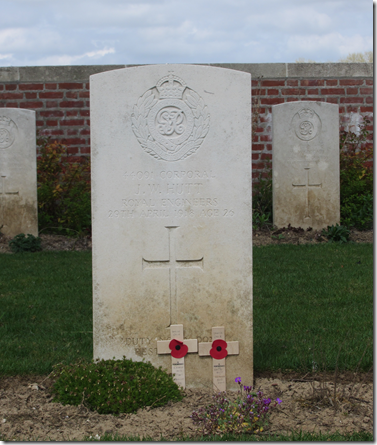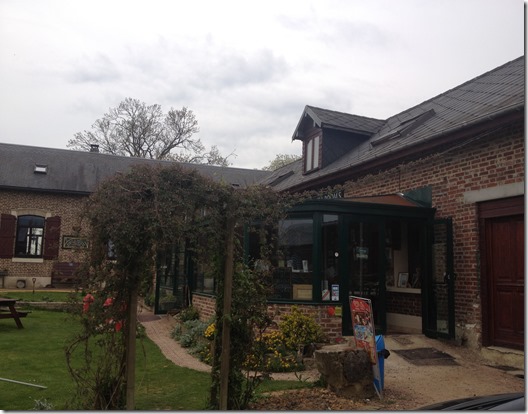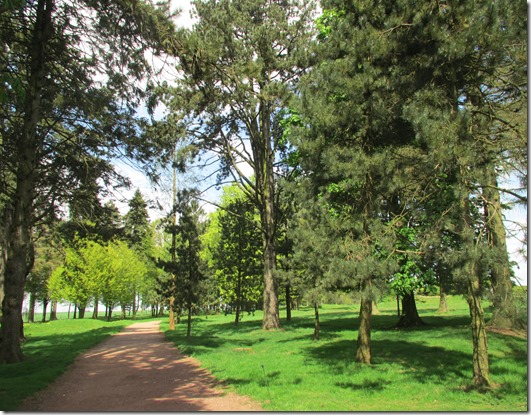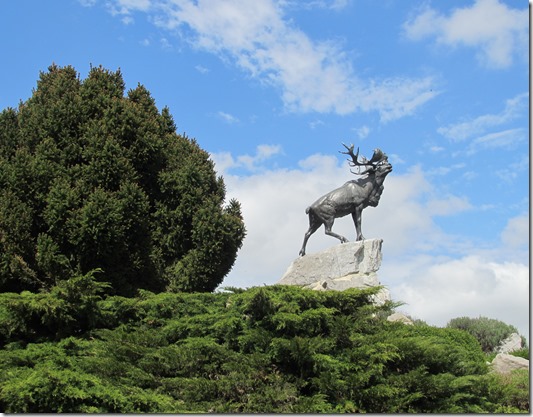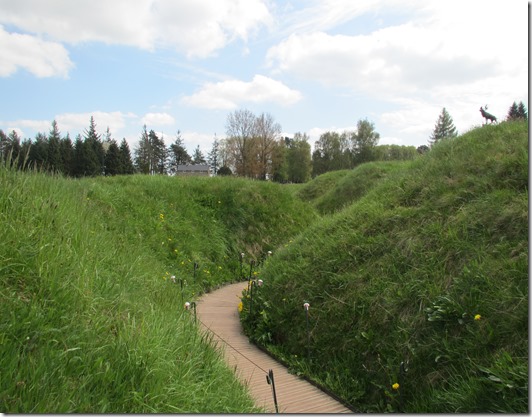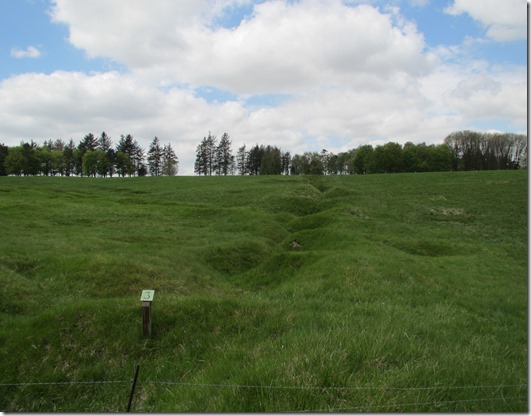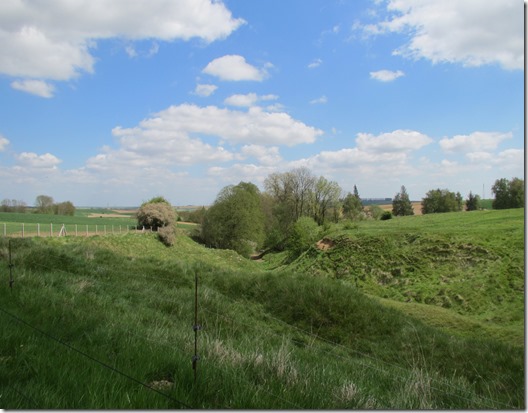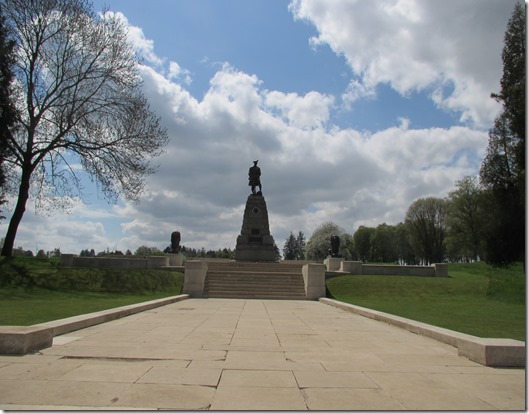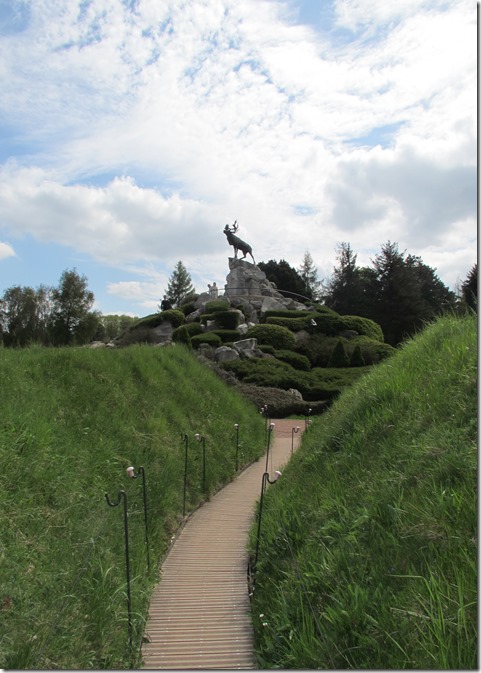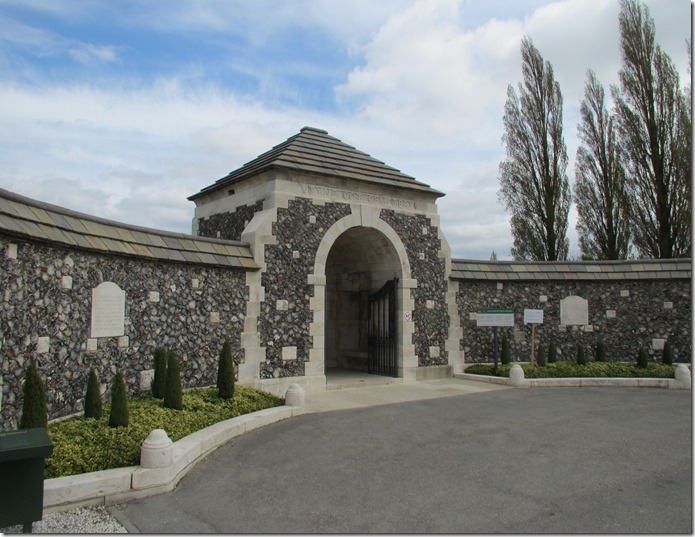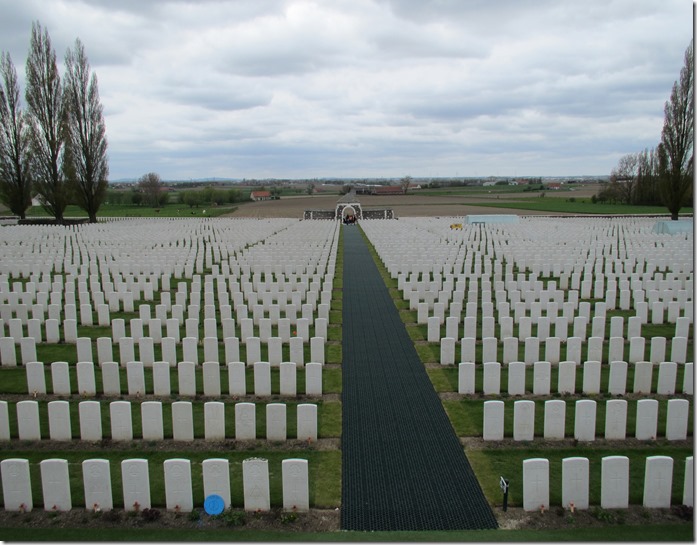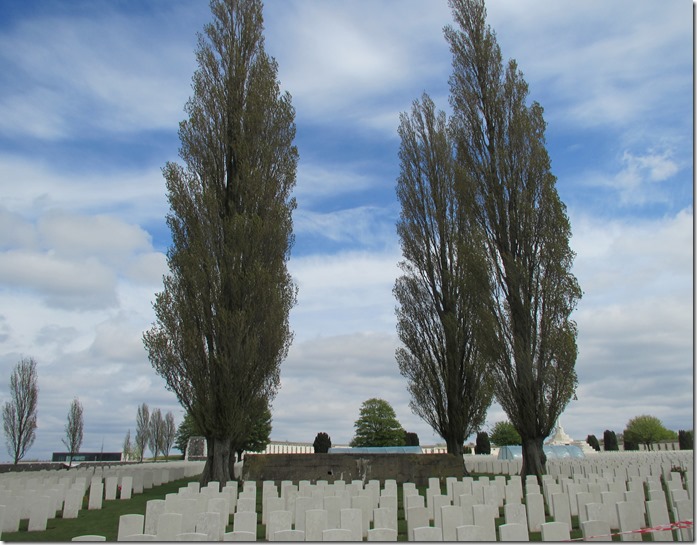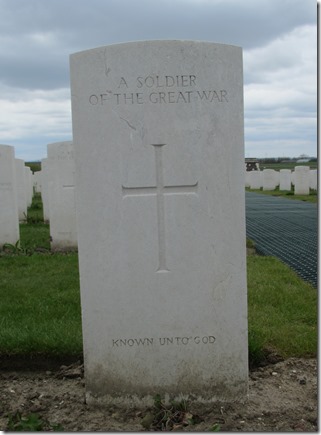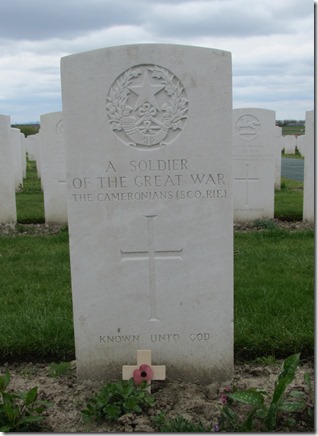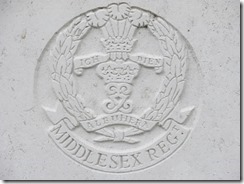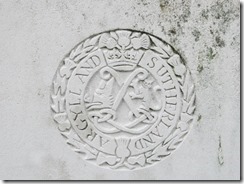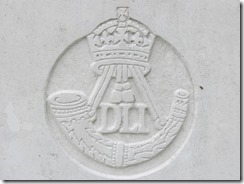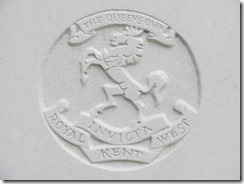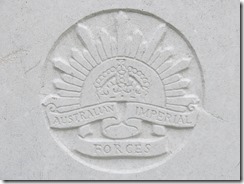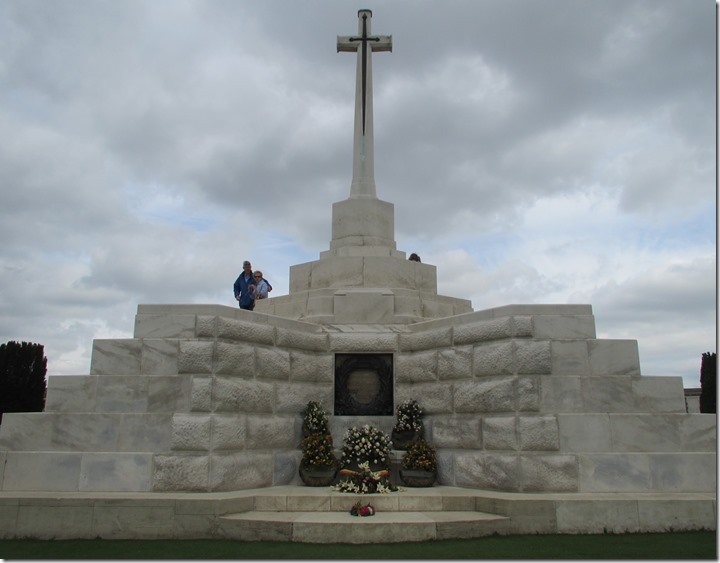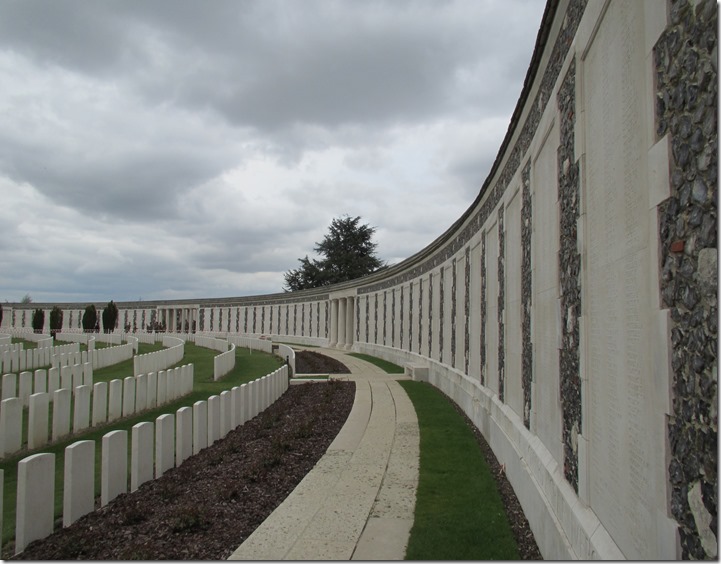Monday 6th May 2013
Monday morning. A bank holiday in the UK but not here in Albert. According to the young lady on reception not much would be open in the morning so parking should not be a problem. On hearing we would be going to the Somme 1916 Museum in Albert she nipped off and came back with a couple of vouchers that would give us €2 off the entry price. A good start.Checked-out and car loaded we headed into the centre of Albert.
We had punched in the address of the museum and hoped parking would be obvious and it turned out not too bad. We drove past the museum and found a space on the side of the road a couple of streets away. Unsure of what the parking sign meant we accosted the first person we saw to seek guidance. Luckily for us (and perhaps him!) the chap we accosted spoke fluent English having lived in England for a period of time. He was a little confused by the Belgian number plate but assured us that we were fine to park there.
Somme 1916 Museum
We entered the museum and navigated paying for the entry with pointing of fingers, waving of euros and extremely bad French.Then we descended…
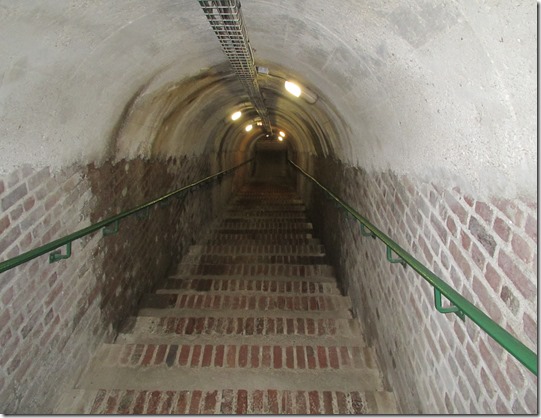
The museum is set in the tunnels under the city. These are old tunnels used as shelters during the war.
At the bottom we head left where a continuous 10 minute video plays alternately in English and French.
We learn what happened in the region during the war, about the tunnel complex and the museum itself. The video over, we head off along the tunnel into the museum proper.
The walls are lined with exhibits. Artefacts and mocked-up war scenes of soldiers performing various activities, each with detailed descriptions, putting it all into context. There are an impressive number of these exhibits and it takes us some time to take it all in, whilst also generating much debate between me and my father.
Someone here has helpfully put some pictures – I was too busy absorbing it all to take pictures.
There was a lot to see, a lot to take in. We spent much longer in the museum than we had anticipated. When we finally left the last display we went through a door behind which we could hear lots of gunfire noises. This was the final bit of tunnel before the exit, the noise and lights give you a brief glimpse of what it would have been like to live through the noise of the fighting. It sounded very realistic.
Up the stairs and out into the gift shop. An ice cream? Why not.
Sitting outside on the bench we eat our ice-creams and enjoy another beautiful day, looking out over the park outside the museum.
This is where I put my phone down on the bench.
We wander slowly back to the car. Well, we think we are. Having travelled underground for a considerable distance we are not entirely sure where we are.
We seek guidance from the heavens…
The Basilica of Notre-Dame de Brebières can be seen clearly from everywhere in the city. Mary and the infant Jesus sit brightly aloft.
We found our way back to the car eventually and entered the next destination in the SatNav.
The Lochnagar Crater
Just a five minute drive out of Albert and we arrived at the side of the crater. A sign warned us that we were entering at our own risk. “I must get a picture of this” I thought as I reached into my pocket for my phone. No phone. I patted one pocket after another, still no phone. The memories came flooding back. The memory of putting my phone down on the park bench but no memory of picking it up again! “Oh gosh, silly me” I exclaimed (or words to that effect).A failed attempt at calling the museum is followed by a manic drive back into Albert. Amazing how confident your wrong side of the road driving gets when your phone is sitting on a park bench. Badly parking in a space near the Basilica, I leg it down the street to the park, down the steps and there, beautifully camouflaged on the bench, is my phone. I slowly walk back to the car catching my breath, waves of relief flooding over me.
We sedately drive back to the crater.
The Lochnagar Crater – Take 2
We pull up at the side of the crater experiencing a sense of déjà vu, except this time when I reach into my pocket I come out with my phone.It did however create a rather impressive hole in the ground.
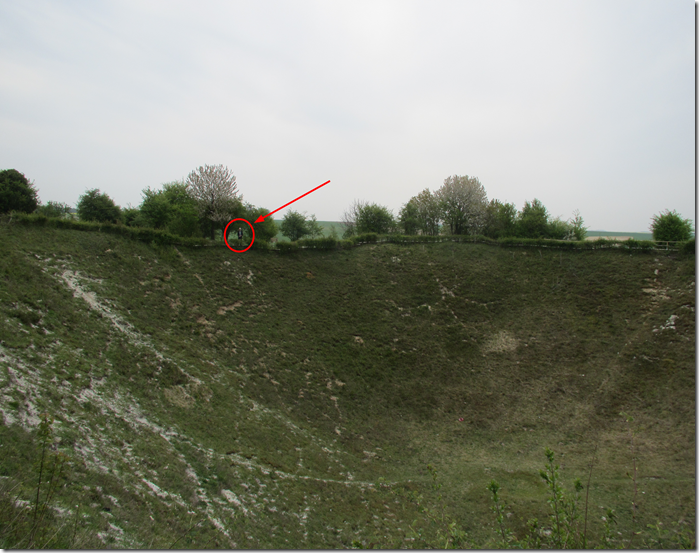
Pictures cannot do this hole justice, you have to be standing here. In the picture above, to show scale, you can see my father on the other side of the crater. It is hard to imagine the the explosion that was big enough to create this hole.
This crater is now a memorial, and a service is held at the crater on July 1st every year, the anniversary of the detonation.
We should remember 1 July 1916 was the first day on the Somme, a single day on which there were nearly 58000 casualties.
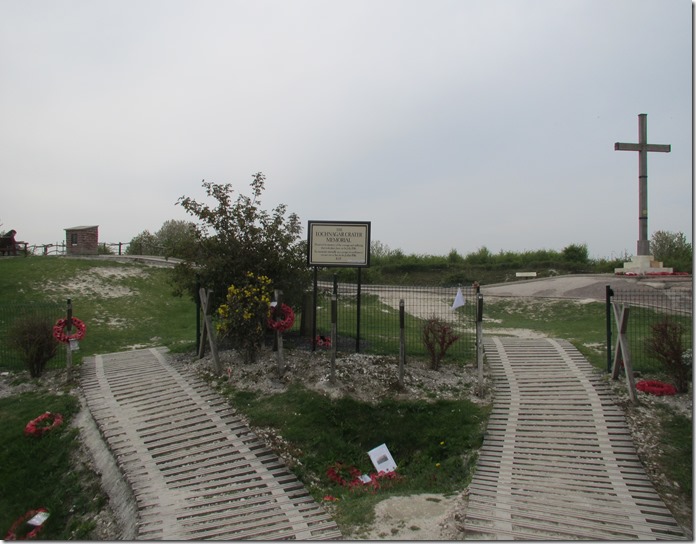
I leave the crater frustrated at not being able to capture the essence of what I have seen here on camera, phone or video. Perhaps that is for the best.
Lunch again at Ocean Villas awaits us but first we have a couple of more places to visit.
Delville Wood
This was a miscalculation on our part, we should have done this on the previous day. We drive from the crater the few kilometres only to find that the visitor centre here is closed.All is not lost. We park up and are still able to visit the stunning Delville Wood South African National Memorial built by South Africa to remember the soldiers who were part of the South African Overseas Expeditionary Force who died during World War One.
We walk along the long tree lined route to the memorial.
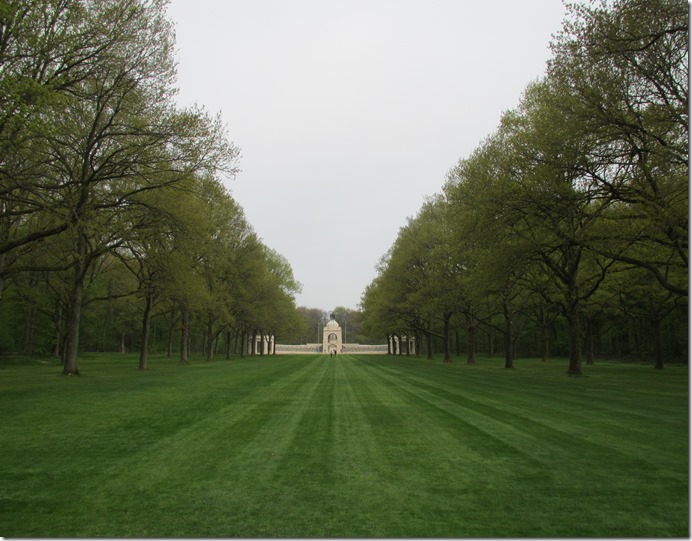
Up to the main entrance.
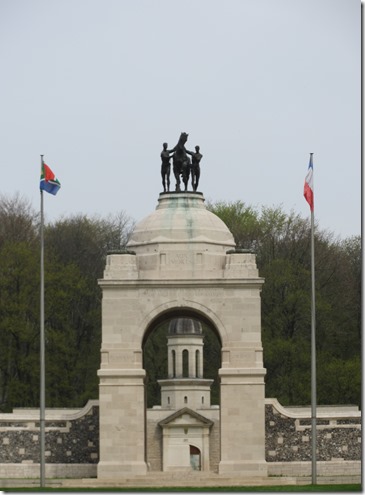
Through the arch and up to the building inside.
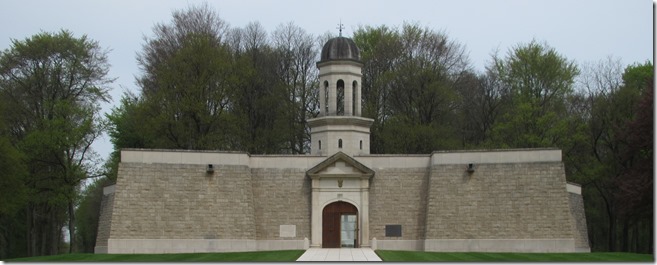
Sadly this was not open so we wandered around the back into the wood itself.
This is Delville Wood. The scene of a devastating action which saw just over 3000 South African soldiers at the beginning of the attack and just over 2500 casualties by the time relief came.
Today only a single tree of the original wood survives.
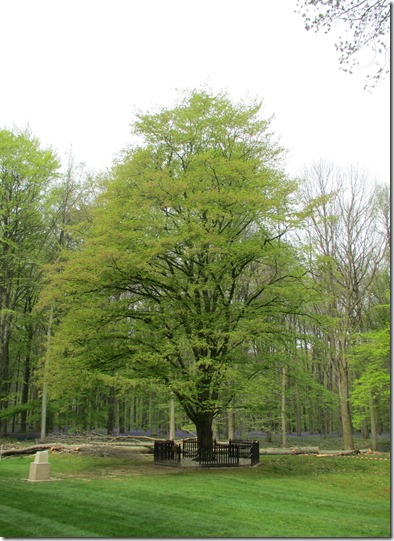
The wood now looks calm and idyllic. Standing there looking out over such beauty it is difficult to imagine the horrors that took place here.
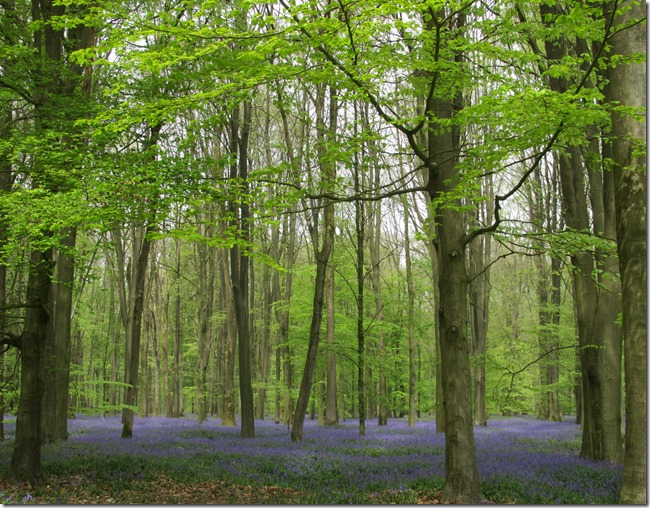
We head back to the car stopping only to pay our respects at the cemetery opposite the memorial.
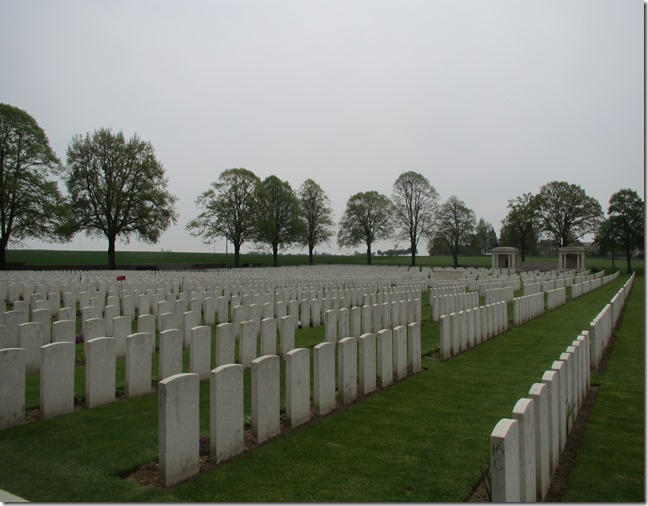
One last stop before lunch.
Guillemont
Just outside Guillemont, like in Langemarck, is a memorial to the 20th Light Division, the one my grandfather served in. This one sits on the edge of a field silently marking one of their objectives in 1916. Looking around we have an unbroken view over the flat landscape.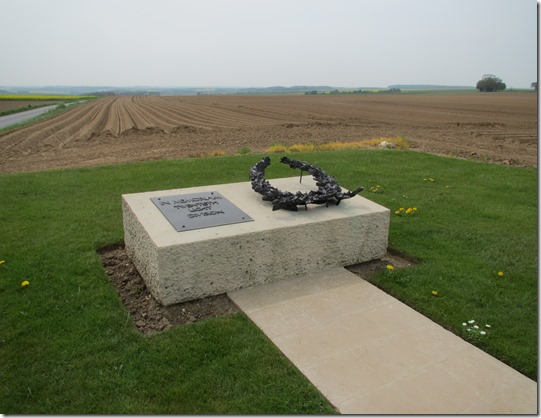
Ocean Villas….again.
We arrive at Ocean Villas. The sun is shining and we sit outside. I mix it up a bit and have lasagne and chips whilst my father, after much negotiation, decides on sausage, egg and chips.Two other groups of people were also lunching and the chickens were providing light entertainment and gratuitously posing. Me being allergic to cats of course meant the cat made a beeline for me as soon as we sat down.
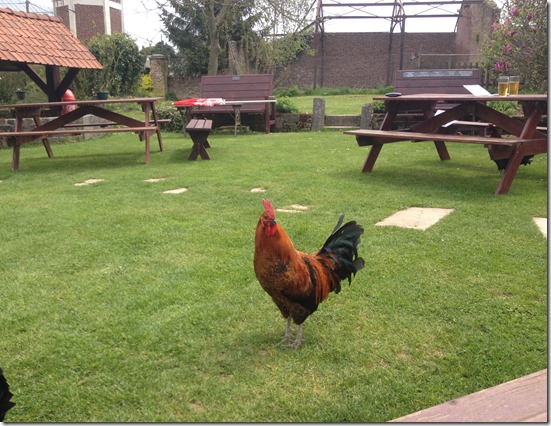
Finishing lunch we nip around the back to see the trenches.
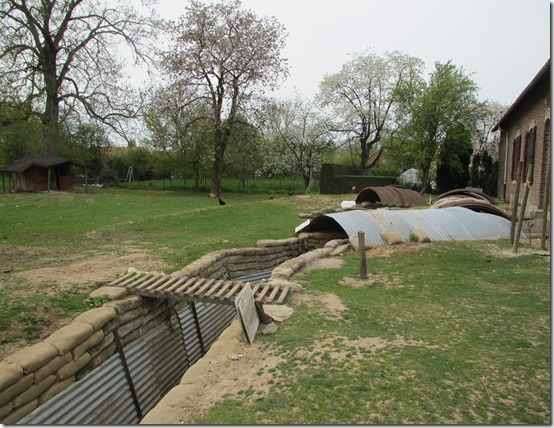
During the war the houses in the village were commandeered, all the cellars used for various purposes and a trench built connecting all of them. A full description and much more information can be found at the Ocean Villas website (follow the menu links).
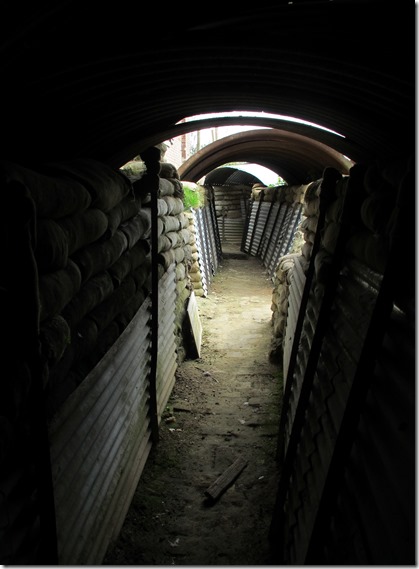
Avril keeps sheep as well as running the tea rooms and the museum.
How could we refuse when invited to see the newly born lambs.

Fully stoked we get in the car, set the SatNav for Brussels Airport and start off on the road home.
Leaving on a Jet Plane
I must say, the quality of the motorways leaving France and entering Belgium is awful. If I didn’t know better I would say some of the holes in the road were left over from the two world wars.We left ourselves around 3 hours to get back to Brussels and this was more than ample. The journey was uneventful except for a little blip trying to find the petrol station, but we overcame. We ended up using about three quarters of a tank for the whole weekend and we did about 600km.
Drop the car off, check-in, buy the wife some perfume then sit in Starbucks with a cup of tea and an overpriced sandwich reflecting on the last four days. There was much to reflect on.
The plane is on time and we are homeward bound back to good old Blighty!
The End.
